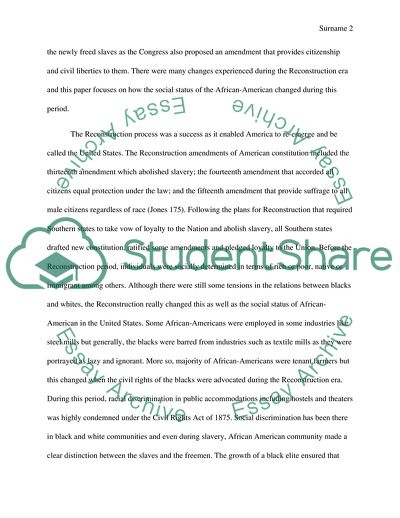Cite this document
(How did the social status of American African changed during the Essay Example | Topics and Well Written Essays - 2500 words, n.d.)
How did the social status of American African changed during the Essay Example | Topics and Well Written Essays - 2500 words. https://studentshare.org/history/1821347-how-did-the-social-status-of-american-african-changed-during-the-reconstruction-era1865-1875
How did the social status of American African changed during the Essay Example | Topics and Well Written Essays - 2500 words. https://studentshare.org/history/1821347-how-did-the-social-status-of-american-african-changed-during-the-reconstruction-era1865-1875
(How Did the Social Status of American African Changed During the Essay Example | Topics and Well Written Essays - 2500 Words)
How Did the Social Status of American African Changed During the Essay Example | Topics and Well Written Essays - 2500 Words. https://studentshare.org/history/1821347-how-did-the-social-status-of-american-african-changed-during-the-reconstruction-era1865-1875.
How Did the Social Status of American African Changed During the Essay Example | Topics and Well Written Essays - 2500 Words. https://studentshare.org/history/1821347-how-did-the-social-status-of-american-african-changed-during-the-reconstruction-era1865-1875.
“How Did the Social Status of American African Changed During the Essay Example | Topics and Well Written Essays - 2500 Words”. https://studentshare.org/history/1821347-how-did-the-social-status-of-american-african-changed-during-the-reconstruction-era1865-1875.


